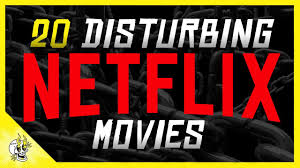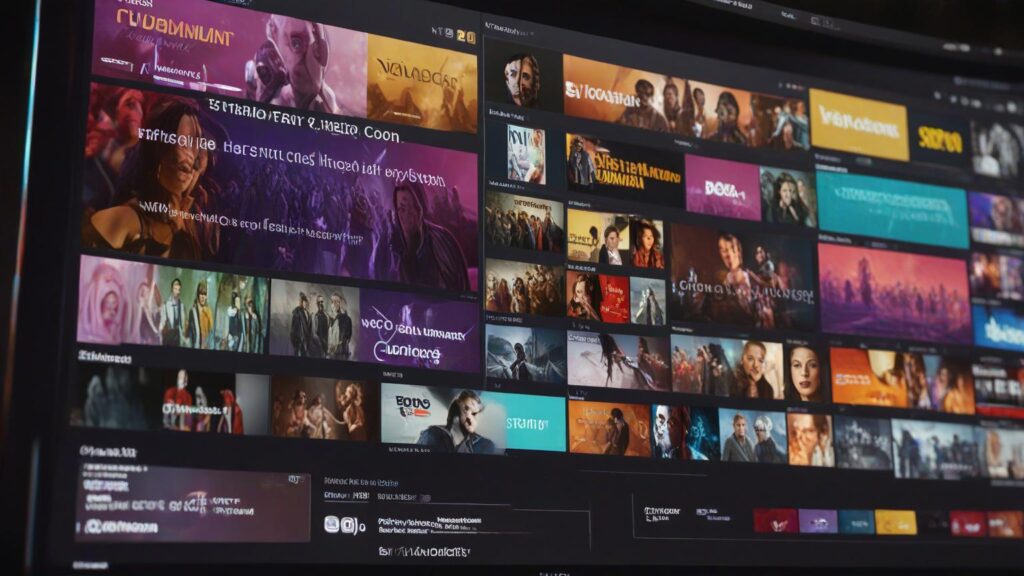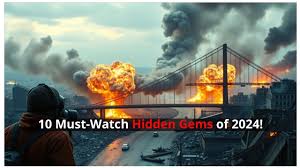
The Power of Cinematic Metaphors How Film Interprets Literary Symbols
The Power of Cinematic Metaphors How Film Interprets Literary Symbols In today’s digital age, movies are everywhere, offering endless choices. Whether you want a funny
The Official Website of E.B. Brown

The rise of streaming services has not only transformed how we watch films but has also reshaped film criticism and audience engagement. With an overwhelming number of films and shows now available at our fingertips, the way we discover, discuss, and critique cinema has evolved dramatically. Streaming platforms like Netflix, Amazon Prime Video, Disney+, and others have opened up new avenues for content consumption, while simultaneously challenging traditional methods of film criticism and creating new dynamics in how audiences engage with movies.
One of the most significant impacts of streaming on film criticism is the democratization of review platforms. In the pre-streaming era, film critics were largely confined to major newspapers, magazines, and television programs. Their opinions often held a significant amount of sway, shaping public perception and influencing box office success. However, streaming platforms have fundamentally changed this landscape by giving audiences a direct role in the critique and discussion of films through user reviews, ratings, and social media engagement. Websites like Rotten Tomatoes, IMDB, and Letterboxd allow ordinary viewers to voice their opinions on films, often on the same day a film is released. These platforms aggregate user reviews and provide a more democratic space for film discussion, where individual voices, not just professional critics, can influence the reputation of a movie.
This shift has led to an increased visibility of diverse opinions. Traditional critics, once the gatekeepers of cinema’s cultural conversation, now find themselves in dialogue with everyday viewers who may have entirely different perspectives or criteria for evaluating films. This diversity in viewpoints has opened the door for more varied and nuanced conversations about films, where not just technical mastery or highbrow analysis are valued, but also personal connection, cultural context, and genre enjoyment. Streaming services amplify this conversation by recommending films based on viewers' previous habits, creating a more individualized, personalized viewing experience that includes a variety of voices, including those of fans and niche communities.
On the flip side, this crowd-sourced criticism can sometimes dilute the authority of traditional critics. As streaming platforms prioritize ratings and viewer counts, there is a risk of popular opinion overshadowing more thoughtful or critical analysis. The "thumbs up/thumbs down" model, for example, simplifies nuanced critiques into binary choices that might not capture the complexities of a film’s themes, performances, or direction. Additionally, the sheer volume of content available on streaming platforms can make it harder for any single voice—whether that of a critic or a viewer—to stand out. With new films constantly being added to streaming libraries, the conversation around films is fast-paced, and films can quickly get lost in the digital sea of content, limiting the depth of critical discourse.
Streaming has also shifted how critics and journalists engage with films. With immediate access to films across various genres and languages, critics no longer need to rely solely on theatrical screenings or press junkets to review films. They can watch and review films from the comfort of their own homes, often with more time to digest and reflect on what they’ve seen. This change has brought greater flexibility and breadth to film criticism, enabling critics to tackle a wider variety of films, including those from non-English speaking countries, independent films, and documentaries that might not have received attention in mainstream outlets. At the same time, the digital format has made it easier for critics to reach a global audience, allowing film reviews to travel much faster and further, particularly through social media and blogs. Critics now find themselves engaging with a global audience of readers who are interested not just in reviews but in recommendations, behind-the-scenes insights, and broader conversations about film culture.
However, the instant availability of films on streaming platforms has also changed the timing and nature of film criticism. Traditionally, reviews would be written days or weeks after a theatrical release, giving critics time to reflect on a film and offer a measured, thoughtful critique. In the age of streaming, however, immediacy has become a hallmark of film criticism. Viewers can start discussing a film online as soon as it’s released, and critics feel pressure to publish reviews quickly in order to stay relevant in the rapidly moving digital conversation. This rush to publish can sometimes compromise the depth of analysis in favor of speed, and critics may find themselves addressing a film’s broader appeal or popularity rather than its artistic merits or long-term cultural significance.
Another important shift in film criticism is the way audience engagement has become more interactive. In the past, moviegoers would watch films, read a few reviews, and discuss them in small circles. Now, with streaming services, the audience is invited into a much more dynamic conversation. Social media platforms like Twitter, Instagram, and TikTok have become essential spaces where audiences engage with films, sharing instant reactions, memes, fan theories, and more. Viewers can discuss films with friends or strangers around the globe, creating a more interactive, community-driven conversation about films than ever before.
The impact of streaming on film criticism is also evident in the rise of YouTube channels and podcasts that have turned casual movie lovers into influential critics and commentators. Film discussion channels, like those on YouTube or popular podcasts like The Film Stage Show and Blank Check, have amassed large followings and can help shape popular opinion. These new forms of criticism give audiences a broader spectrum of perspectives, often blending humor, analysis, and community into a rich, multifaceted conversation. Some of these channels and podcasts have even gained enough influence to rival traditional critics, with millions of followers awaiting their thoughts on the latest releases.
On the flip side, the ease of access to films through streaming platforms also fosters a sense of film fatigue. With so many films available at once, it’s easy for audiences to feel overwhelmed or disconnected from any single film. The sheer abundance of choices often leads to “choice paralysis,” where viewers struggle to make a decision on what to watch next. In this environment, film criticism becomes not just about evaluating the quality of a film but about helping audiences sift through the clutter and make more informed decisions. This demand for curated recommendations has given rise to the “recommendation engine” model, where critics, influencers, and algorithms play an increasingly important role in guiding audiences through vast libraries of content.
Audience engagement has also been enhanced by interactive content on streaming platforms, particularly in the form of choose-your-own-adventure-style movies like Bandersnatch (part of Netflix’s Black Mirror anthology). These films allow viewers to actively participate in the narrative, making choices that influence the direction of the story. This innovation opens up new opportunities for critics and audiences to engage with films in ways that transcend passive viewing, creating an interactive dialogue between the filmmaker, the critic, and the audience.
In conclusion, streaming services have fundamentally changed the relationship between film criticism and audience engagement. The ease of access to films, the democratization of film reviews, the rise of social media conversations, and the increase in interactive and global content have all led to a more vibrant, inclusive, and immediate conversation about films. While this shift has democratized criticism, it has also raised questions about the depth and quality of discourse. Critics now navigate a faster, more fragmented landscape, where they must engage with a broader audience while maintaining analytical rigor. For viewers, this new era of film consumption offers more opportunities to connect with others, discover new films, and participate in the evolving conversation about cinema. As streaming continues to grow, the lines between critics, audiences, and filmmakers will only blur further, creating a more dynamic and participatory landscape for film appreciation.

The Power of Cinematic Metaphors How Film Interprets Literary Symbols In today’s digital age, movies are everywhere, offering endless choices. Whether you want a funny

Top 10 Hidden Gems on Streaming Platforms You Can’t Miss In the vast ocean of streaming content, some truly exceptional shows and movies often slip

Literary Tourism: Bridging Fiction and Reality Through Travel Literary tourism—exploring the places that inspired or feature in beloved books—has become an increasingly popular way for